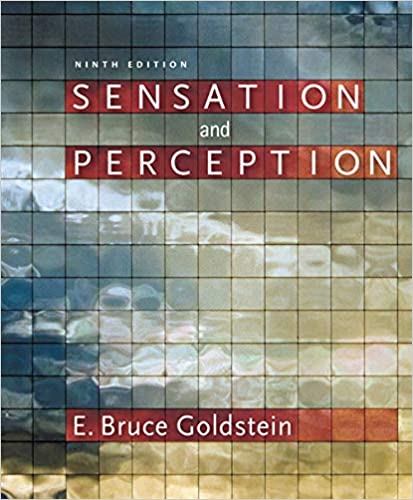
Sensation and Perception 9th Edition by Bruce Goldstein
Edition 9ISBN: 978-1133958475
Sensation and Perception 9th Edition by Bruce Goldstein
Edition 9ISBN: 978-1133958475 Exercise 3
How could you determine the contribution of binocular vision to depth perception? One way would be to close one eye and notice how this affects your perception. Try this, and describe any changes you notice. Then devise a way to quantitatively measure the accuracy of depth perception that is possible with two-eyed and one-eyed vision.
Figure 1 Corresponding points on the two retinas. To determine corresponding points, imagine that the left eye is slid on top of the right eye. F indicates the fovea, where the image of an object occurs when an observer looks directly at the object, and A is a point in the peripheral retina. Images on the fovea always fall on corresponding points. Notice that the A's, which also fall on corresponding points, are the same distance from the fovea in the left and right eyes.

Figure 2 (a) An observer looking at Julie's face, with a tree off to the side. (b) The observer's eyes, showing where the images of Julie and the tree fall on each eye. Julie's images fall on the fovea, so they are on corresponding points. The arrows indicate that the tree's images are located the same distances from the fovea in the two eyes, so they are also on corresponding points. The dashed blue line is the horopter. The images of objects that are on the horopter fall on corresponding points.

Figure 1 Corresponding points on the two retinas. To determine corresponding points, imagine that the left eye is slid on top of the right eye. F indicates the fovea, where the image of an object occurs when an observer looks directly at the object, and A is a point in the peripheral retina. Images on the fovea always fall on corresponding points. Notice that the A's, which also fall on corresponding points, are the same distance from the fovea in the left and right eyes.

Figure 2 (a) An observer looking at Julie's face, with a tree off to the side. (b) The observer's eyes, showing where the images of Julie and the tree fall on each eye. Julie's images fall on the fovea, so they are on corresponding points. The arrows indicate that the tree's images are located the same distances from the fovea in the two eyes, so they are also on corresponding points. The dashed blue line is the horopter. The images of objects that are on the horopter fall on corresponding points.

Explanation
Binocular vision is very essential for t...
Sensation and Perception 9th Edition by Bruce Goldstein
Why don’t you like this exercise?
Other Minimum 8 character and maximum 255 character
Character 255


